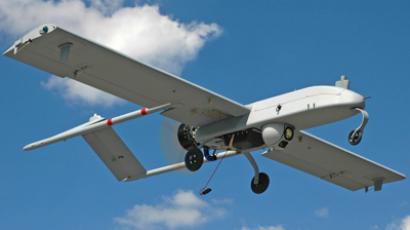Drones cause 10 times more civilian deaths than manned planes

An expert on drone casualties has told reporters that the use of unmanned aerial vehicles by American forces has caused 10 times the number of deaths brought on by more conventional aircraft.
Speaking to The Guardian’s Spencer Ackerman, Larry Lewis of the Center for Naval Analyses claimed United States-led drone strikes in Afghanistan are not only more likely to cause civilian casualties than traditionally piloted planes, but the impact of UAVs is 10-fold what would be found by using more antiquated air ships.
Lewis has conducted multiple studies on the use of drones in Afghanistan and made his recent determination after reviewing data pertaining to air strikes that occurred there between mid-2010 and mid-2011, Ackerman reported.
“Lewis told the Guardian he found that the missile strikes conducted by remotely piloted aircraft, commonly known as drones, were 10 times more deadly to Afghan civilians than those performed by fighter jets,” Ackerman wrote.
Lewis said that statistic comes from viewing classified information about the number of civilian casualties, data which he is legally prohibited from sharing. But while his findings in full or only accessible to those with proper standing, an unclassified executive summary of his report offers a mere glimpse into how deadly America’s drone wars really are.
“The US government has described drone airstrikes in operations outside declared theaters of armed conflict as surgical and causing minimal civilian casualties,” the summary begins. “Analysis of air operations in Afghanistan, combined with a review of open-source reports for drone strikes in Pakistan, suggest that these fell short of intended goals.”
Elsewhere, the report acknowledges that the classified nature of these statistics could be preventing Americans from lessening the number of civilian drone deaths in the future.
“While consequence management approaches used in Afghanistan may not translate directly into cases where the US does not want to officially acknowledge its actions, the use of proxies or leveraging relationships with cooperative host-nation governments could provide options during these operations. Conducting more comprehensive assessments of civilian harm during airstrikes in operations outside declared theaters of armed conflict, followed by effective consequence management efforts, should help to protect the reputation of the US, combat false allegations and mitigate negative second-order effects that can undermine US campaign objectives and freedom of action,” it reads.
Ackerman does not stop short of recalling a speech by President Barack Obama earlier this year at Washington’s National Defense Institute in which he insisted that "conventional airpower or missiles are far less precise than drones, and likely to cause more civilian casualties and local outrage.” On the contrary, however, the unclassified summary notes that drone strike are “an order of magnitude more likely to result in civilian casualties per engagement” than traditional aircraft.
In an earlier address last year, President Obama said drones had "not caused a huge number of civilian casualties” and insisted "this thing is kept on a very tight leash.”
An August 2011 report from the UK’s Bureau of Investigative Journalism found that US-led drone strikes in Pakistan have caused upwards of 775 civilian deaths, with total casualties being at least 40 percent higher than what the US government previously reported. This past February, Senator Lindsey Graham (R-South Carolina) said the number of total kills attributed to US drones is close to 5,000.
“We’ve killed 4,700,” the senator said at an event in his home state. “Sometimes you hit innocent people, and I hate that, but we’re at war, and we’ve taken out some very senior members of al-Qaeda.”














